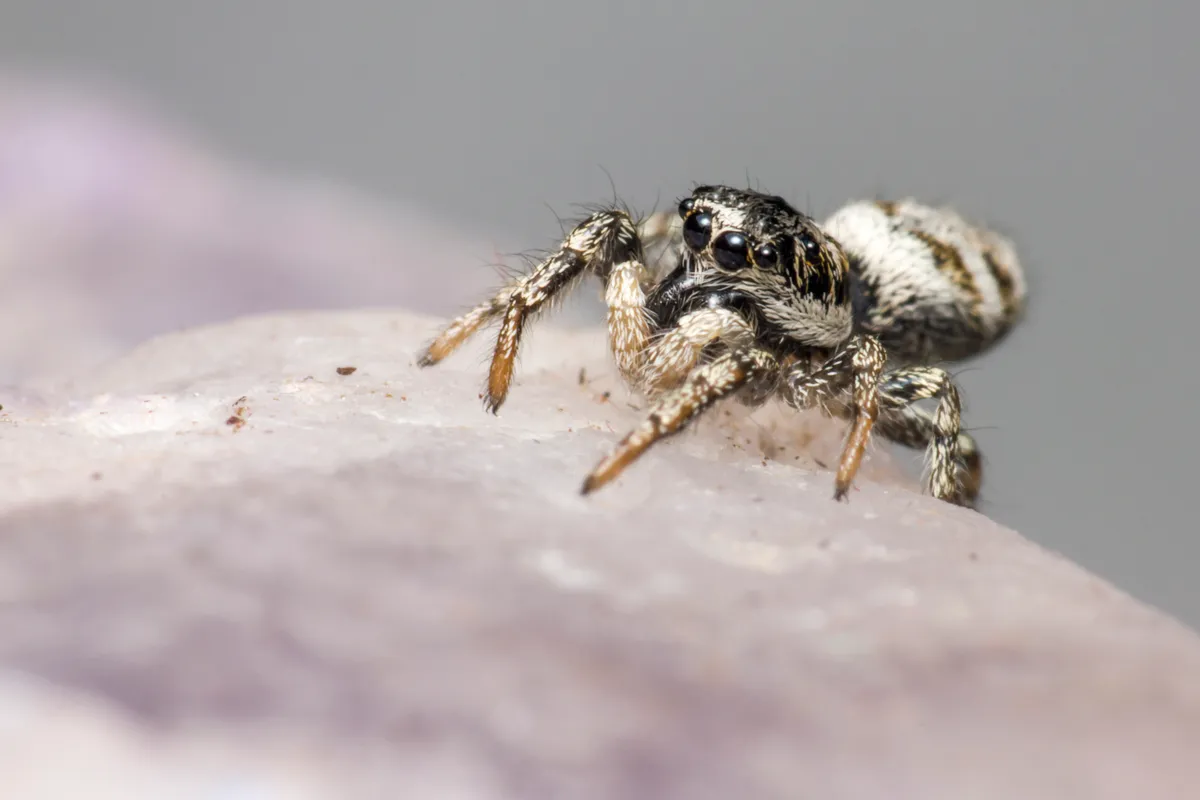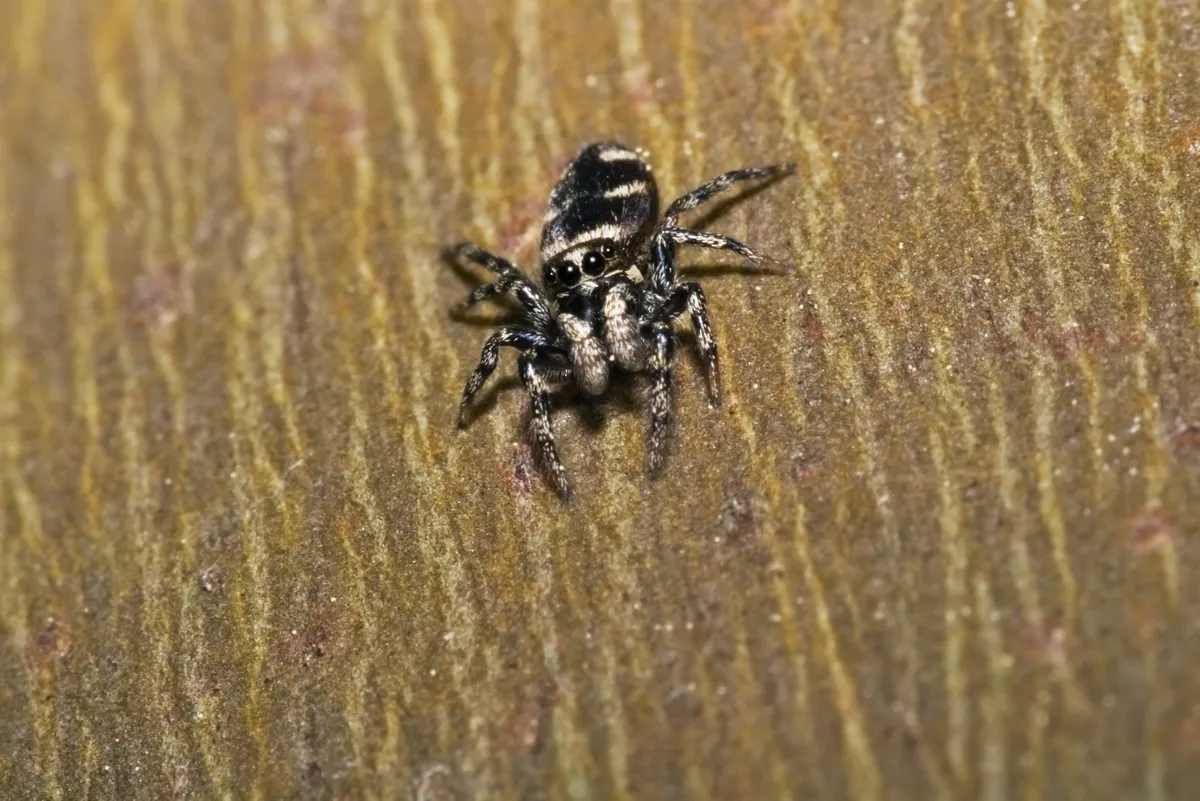1
Where do zebra jumping spiders live?
These striking little jumping spiders are most frequent around human habitations – on sunny outside walls and fences and sometimes indoors. But they also turn up on tree trunks, rocks and shingle.
2
Do all zebra jumping spiders look the same?
The contrast between the black and white stripes is rather variable. Entirely black forms have been recorded in industrially polluted areas, where they are better camouflaged against sooty surfaces.

3
How do jumping spiders jump so far?
They jump by explosively straightening their back legs. Lacking extensor muscles, the legs are powered by the pressure created when blood is pumped into them from the body.
4
How do zebra jumping spiders find their prey?
They track moving prey with binocular vision provided by a pair of enormous forward-facing eyes. These can swivel up and down and side to side and move forward and back to focus.
5
Do zebra jumping spiders have 360 vision?
Six smaller, fixed eyes detect movement to the sides and rear. Waggle a finger behind them and they will spin round to take a closer look.

6
Why do zebra jumping spiders need such big fangs?
Adult males can be recognised by their massive, elongated chelicerae (the mouthparts that bear the fangs), which they wield during tussles with other males.
7
Zebra jumping spiders can't rely on their silk
The safety lines they trail behind them can hold a fall only if the plummeting spider releases more silk through its spinnerets to reduce the shock-load on the thread.
If you want to find out more about the spiders that are all around us, take a look at these Discover Wildlife features:
9 UK household spiders and webs for you to spot
Photo © espy3008/Getty